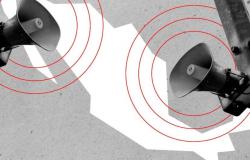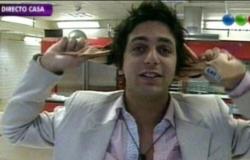If the car engine makes any noise, or walking feels strange, practically no one would hesitate to stop and schedule a visit with the mechanic. The same should happen when the one who gives signs that something is not right is the engine of our body.
On the eve of World Heart Inufficiency daythat is commemorated on May 9, specialists emphasize the importance of learning to identify in time the alarm symptoms that the heart gives, not underestimate them and consult in time, instead dare and “Keep walking” as if nothing happened.
When the heart does not pump well
Heart failure (IC) is one of the main causes of hospitalization in over 65 and it is estimated that it affects one in 10 from the 70s.
It is not a disease in itself, but a clinical syndrome. This is explained by Bruno Guarino, head of the Heart Insufficiency and Misocardiopathies of the Clinic Hospital: “It is the set of signs and symptoms that arise when the heart It is not able to pump enough oxygen -rich blood to the rest of the organism. “
That inability translates into different signs. The most common are inexplicable fatigue, lack of air, chest pain, or swelling of the ankles and/or abdomen.
Subscribe to good life
Every fifteen days, Florencia Cunzolo tells you the last to take care of your health and feel good. Register here.
The lack of air or difficulty breathing (dyspnea) is the most frequent symptom, and can manifest both during the day and orthopnea (when the patient cannot breathe lying) or sudden awakenings due to lack of air (nightly paroxysmal dyspnea). But also by tilting the trunk forward (bendopnea), for example, To put on or tie the laces.
“A striking sign is that when the cords are tied, the lack of air appears. It is also common that these people cannot sleep because when the lack of air appears, so they usually sleep sitting,” he said about it in a note published by Clarion Eduardo Perna, former president of the Argentine Federation of Cardiology (FAC) and head of the Division of Heart Inadequacy and Pulmonary Hypertension of the Institute of Cardiology “JF Cabral”, of Corrientes.
The lack of air, says Guarino, occurs because The body tries to compensate A heart that can no longer fulfill its task efficiently.
Why does heart failure occur?
There are different types of IC, which can be presented suddenly, for example after a heart attack, or slowly installed, they report from the Hospital de Clínicas, which integrates the Hospitals Network of the University of Buenos Aires.
Sometimes, it is the result of poorly controlled hypertension or diabetes, chronic coronary heart disease, A previous infarctiona hereditary myocardiopathy or simply of the progressive deterioration of an organ subject to progressive wear for too long, as is the case with valvulopathies, they add.
The lifestyle also plays a central role: the sedentary lifestyle, smoking and an unhealthy food They can favor their appearance.
Early diagnosis, the great challenge
One of the big problems is that the symptoms, both the most common and the least frequent (mood disorders such as anxiety and depression, persistent cough, insomnia, memory alterations, nausea, lack of appetite or rapid weight gain) can be confused with those of other diseases or associated – erectly – over time.
As a result, one of the greatest challenges, the specialists recognize, is the early diagnosis.
“The tools to diagnose are electrocardiograms, chest x -ray, doppler color echocardiograms, dosage of natural peptides, which are very useful biomarkers for daily exercise in this subspecialty,” Guarino says.
However, it emphasizes that “the most important thing is still listening to the patient, know how to read the symptoms you count and interpret the signs of the physical exam before it is too late. “
And admits that “today is an even greater challenge, since The physical exam is done less and less And it is less exhaustive than in past decades, due to the excessive and often wrong use of diagnostic methods. “
How is heart failure
The treatment combines changes in lifestyle, control of risk factors and medicines that, with good adhesion, achieve Avoid internments and improve the quality of life. Also, some selected patients are candidates to use devices such as pacemakers or defibrillators.
As for lifestyle measures, the specialist at the Clinic Hospital remarked to reduce salt consumption, not smoking (or leaving cigarette), incorporating supervised physical activity and controlling factors such as hypertension, high cholesterol or diabetes are fundamental and have a real impact on the evolution of the disease (and they are pillars in prevention).
But in recent years, the most significant advance came from the hand of pharmacological treatment, which He revolutionized the approach of the IC. “In the last decade, patients with heart failure achieve prolonged periods of stability, without hospitalizationsand lead a virtually normal life for a long time, “he encourages.
In the paradigm change, the narrow monitoring On the part of specialized multidisciplinary teams (cardiologists, psychologists, psychiatrists, kinesiologists and nutritionists) who work in clinics or hospitals work in the rehabilitation of patients with IC.
“It is essential that the system is prepared, that there are monitoring programs, interdisciplinary care and constant medical training. The tools are, but Missing awareness“, warns Guarino, who directs the outpatient heart failure unit that carefully attends to this type of patients.
 Persistent cough can be a symptom of heart failure. Photo Shuttersock.
Persistent cough can be a symptom of heart failure. Photo Shuttersock.One of the main objectives you pursue with your team is adherence to treatment. “Many patients are late: they interrupt their medications, They underestimate the symptoms Or they simply do not consult, “he says with concern.
An action plan
Not only is it important to be attentive to the symptoms that lead to early detection, but people who already have a diagnosis of heart failure must be very aware of the signs that a Worsening of the painting And what to do if they appear.
In that sense, it is useful to have an action plan, writes in an article of the Mayo Clinic (Rochester, Minnesota, United States), the cardiologist specialized in the heart of the Rekha Mankad woman.
“An action plan for heart failure, or a self -assessment plan, provides clear instructions for the patient and their caregivers to follow them in case new symptoms appear,” he says and adds that the ideal is to work with the treating doctor to customize a plan “that is the best according to your type of heart failure and your basic abilities.”
According to the American Heart Association (AHA), a typical plan can be divided into three levels:
Green = stable. There are no notable changes in the symptoms of heart failure. Your weight is stable. You have no chest pain or lack of air. I continued with your daily weight checks and your treatment plan as recommended.
Yellow = warning. Call your doctor if you have cough that you did not have, difficulty breathing when you do activities, increased swelling in legs or feet, or if you suddenly increase from 900 grams to 1.3 kilos from one day to another, or more than two kilos in a week. “You may not need to go to the office. However, you may have to change your diet or medications.”
Red = danger. You need to be evaluated immediately if you have heart failure and increased more than two kilos in a week, if you have difficulty breathing at rest, problems to lie and sleep, a lot of swelling and discomfort in the lower part of the body, constant and dry cough, loss of appetite, dizziness or confusion.
➪ Are you any questions about health and well -being that you would like us to address in notes in the section? Write your consultation [email protected]







